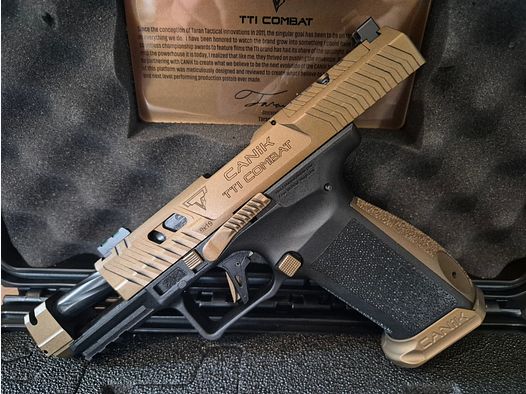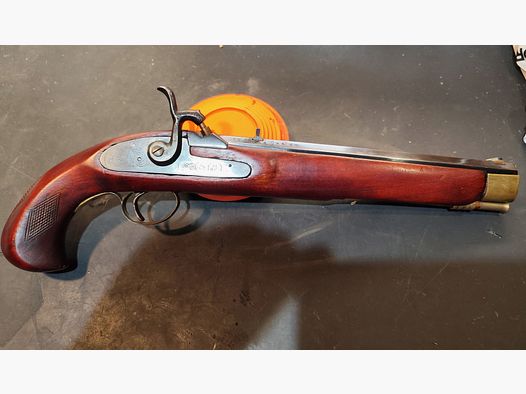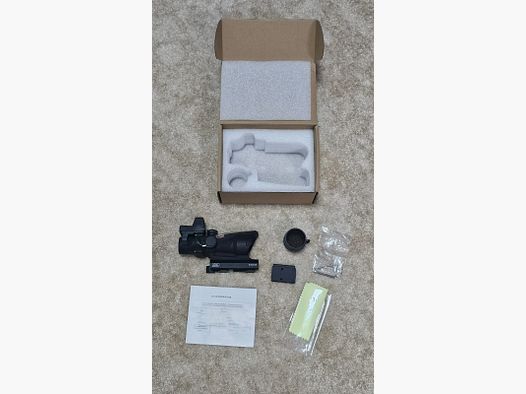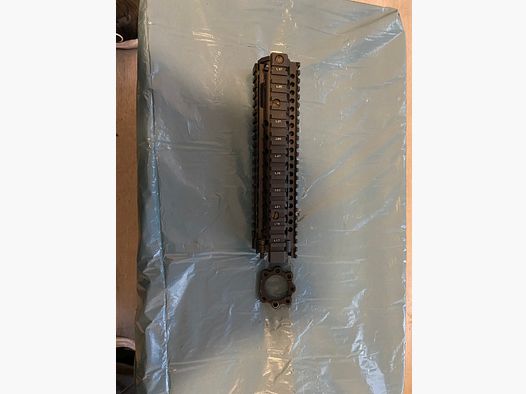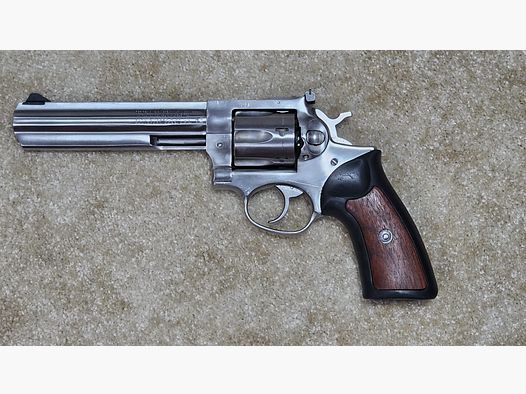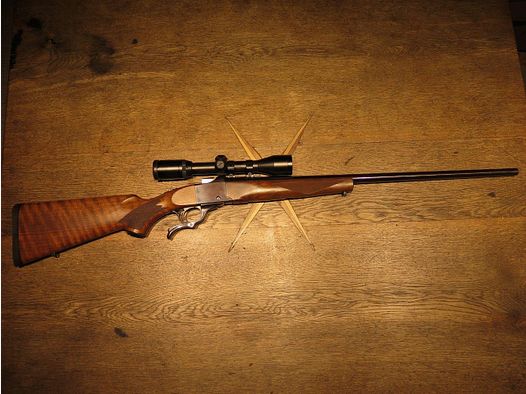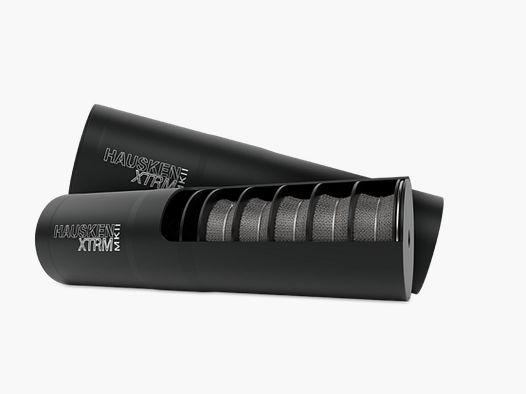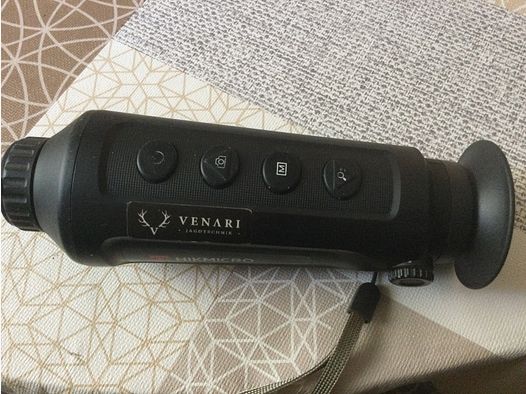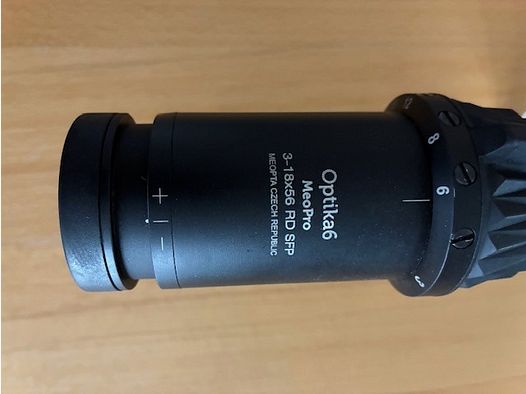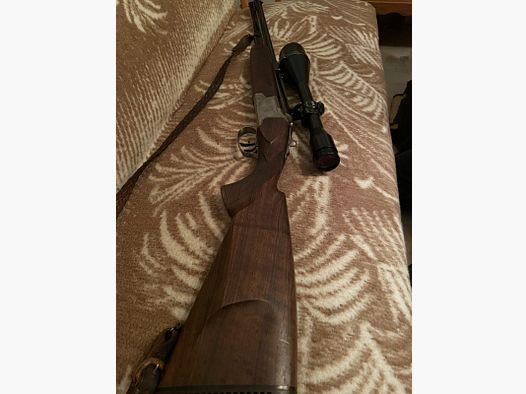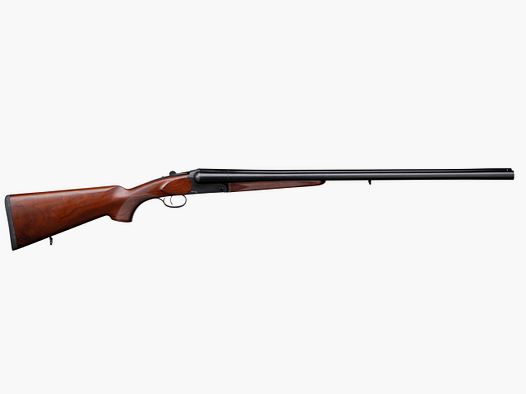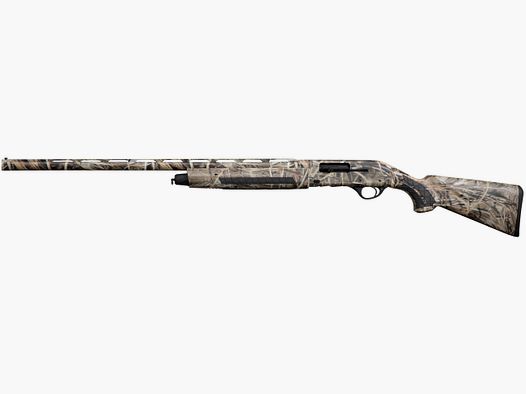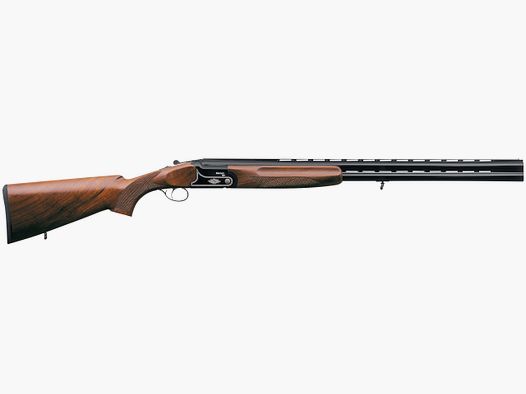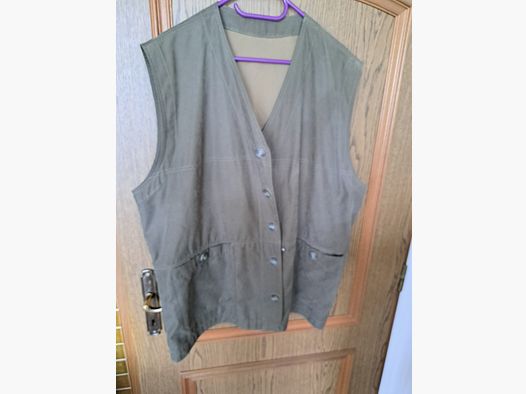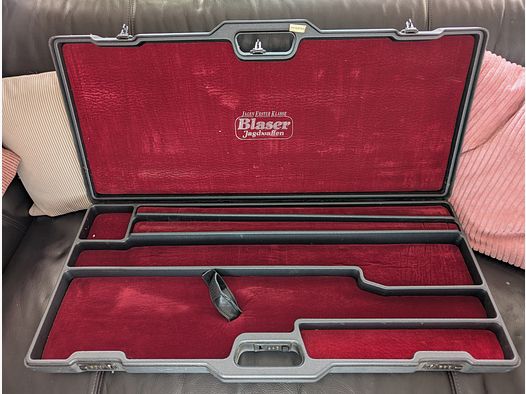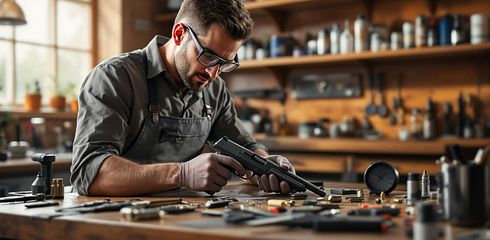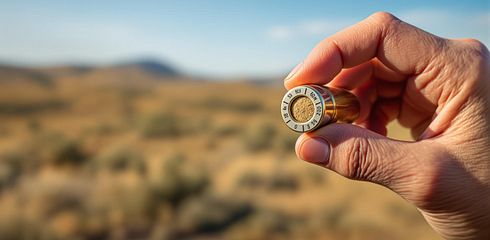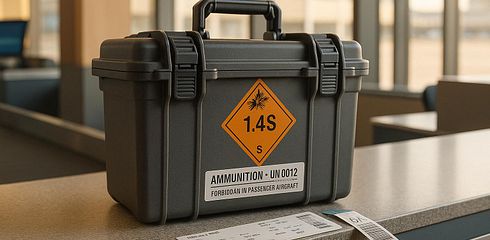Moisture is the biggest enemy of your ammunition. Even low humidity can cause corrosion, damage to cartridge cases, primers, and powder. This leads to functional problems, misfires, or even dangerous situations like stuck bullets in the barrel.
Key Points at a Glance:
- Optimal Storage: 30–50% humidity, approx. 21 °C.
- Recognizing Damage: Discoloration, rust, swollen cases, weak shots.
- Protective Measures: Airtight containers, desiccants (e.g., silica gel), regular checks.
- Disposal: Never dispose of damaged ammunition in household waste – contact authorities or specialized companies.
Moisture can not only jeopardize the lifespan but also the safety of your ammunition. With the right storage methods, you can avoid damage and keep your ammunition functional in the long term.
Quick Tip: The Do's & Don'ts of Ammo Storage
How Moisture Damages Ammunition
Moisture affects all components of a cartridge – from the primer to the powder and the case to the bullet.
Rust and Decomposition of Components
Corrosion occurs when moisture reacts with metal. This process can begin at a relative humidity of about 45%. In clean air, iron remains nearly corrosion-free even at humidity levels of up to 99%. In polluted air, however, corrosion accelerates significantly.
Brass cases offer some protection but are by no means immune. Steel cases react much more strongly to moisture, which is why using desiccants during storage is advisable. Untreated metal alloys and aluminum also oxidize upon contact with air. This oxidation can impair the performance and precision of lead bullets and other metals, especially when temperature fluctuations lead to condensation.
Primers are particularly susceptible to moisture. Damage to these components underscores the importance of careful storage – as highlighted in the introduction.
In addition to material destruction, these corrosion processes also lead to functional problems that can negatively affect shooting results.
Effects on Shooting Performance
Moist primers can cause misfires, while damp powder burns unevenly. This leads to weak shots or even duds.
Tests have shown that after 24 hours underwater, only 10% of .22 LR cartridges fired, and the shot velocity decreased by 13%. Another test revealed that 15% of ammunition that had been submerged for more than 24 hours no longer functioned.
Corroded brass or steel cases can cause problems when chambering or ejecting. At the same time, uneven powder burning causes shots to miss their target.
Gary Gronfor from Federal Ammunition emphatically states:
"Once ammunition has gotten wet, been submerged, or sat in a damp range bag or hunting coat, it becomes unreliable and untrustworthy. Moisture can enter through the primer pocket, the crimp, the case mouth, or around the head of a shotshell, contaminating the primer and/or the propellant. The result is a bullet or plug stuck in the barrel [a squib load, where the bullet does not fully exit the barrel], which can go undetected, leading to bulged or burst barrels, other types of firearm damage, and potential injury to the shooter or bystanders."
Recognizing Moisture Damage to Ammunition
After highlighting the effects of moisture on ammunition, here’s how to recognize damage in everyday life in a timely manner. Regularly checking stored ammunition is crucial to detect moisture damage early and avoid dangerous situations. Below, we show you what to look for regarding the case and performance.
Visible Damage Symptoms
The first signs of damage often appear on the cartridge case. Brass turns greenish or brownish, while steel begins to rust. The edges of the case or areas with small scratches are particularly affected, as these spots are more susceptible to corrosion.
Bullets can also show changes. Lead bullets often develop a whitish, powdery layer – a clear sign of oxidation. Other metal bullets may lose their shine or show discoloration and dull spots.
Another warning sign is swollen cases. These occur when moisture causes the powder to swell. Such cartridges can cause problems when chambering or even lead to misfires.
Even the packaging provides important clues. Damp or discolored boxes, damaged plastic seals, or water stains on the ammunition box indicate that the cartridges have been exposed to moisture. If ammunition has been stored in damp packaging for more than 24 hours, it should be considered potentially unusable.
Performance Problems as Warning Signals
Moisture damage is not only visually noticeable but also affects shooting performance. Damp primers can cause misfires, while corrosion damage negatively impacts the function of the ammunition.
Particularly dangerous are so-called Squib Loads. In this case, the bullet gets stuck in the barrel because damp powder burns incompletely and does not generate enough pressure. A stuck bullet can cause severe damage to the firearm and injuries when another shot is fired.
Another sign of moisture damage is a reduced bullet velocity. Tests have shown that .22 LR cartridges can lose up to 13% of their speed after exposure to moisture and may have a failure rate of 90%.
If you observe weak shots or irregular hits, this could indicate uneven burning of damp powder. In such cases, you should immediately check the affected ammunition and replace it if necessary.
On Gunfinder, you can find a variety of ammunition testing devices and caliber gauges that allow you to safely check suspicious cartridges before use.
Protecting Ammunition from Moisture
Moisture can significantly damage ammunition. However, with a few simple measures, you can ensure that your cartridges remain reliable for years. Here’s what storage methods and monitoring devices can help you with.
Proven Storage Methods
To store ammunition safely, airtight containers are essential. Metal or plastic ammunition boxes, like those used by the military, provide excellent protection if well-sealed. Alternatively, more affordable solutions like Tupperware, plastic containers, or freezer bags with zip closures are also suitable.
The storage temperature should ideally be between 13 °C and 29 °C. Be sure to avoid large temperature fluctuations.
Another protection against moisture is silica gel packets. These desiccants effectively prevent moisture accumulation and should not be missing in any storage container, especially for long-term storage. Providers like Wisesorb, Dry & Dry, or wisedry offer corresponding products.
Store ammunition in its original packaging whenever possible and keep it in an airtight container. This not only provides better protection but also makes it easier to identify different batches.
Modern technologies like VCI technology (Vapor Corrosion Inhibitor) offer additional protection against rust and corrosion. VCI capsules, Plastabs, or special poly bags form a protective film on the metal surface, thus preventing rust formation.
Avoid leather bags or leather cartridge belts for long-term storage, as these can retain moisture. Also, permanently storing ammunition in magazines increases the risk of moisture damage.
Monitoring Storage Conditions
In addition to proper storage, it is important to regularly monitor the conditions to ensure optimal circumstances.
Hygrometers and thermometers, such as the Kestrel 3000, are useful tools for controlling temperature, humidity, and dew point. For home use, the MESTEK Temperature Humidity Meter provides a simple way to measure these values.
Ensure that the humidity in your storage area is between 30–50%, ideally at a room temperature of about 21 °C. Military standards recommend keeping the relative humidity in ammunition bunkers below 70%.
In humid environments, such as basements, dehumidifiers are particularly helpful. Modern devices even allow you to monitor values like battery status, humidity, and temperature remotely.
Check your ammunition for moisture and corrosion at least once a year. Document the results to detect changes or problems early.
On Gunfinder, you can find a variety of ammunition boxes, dehumidifiers, and measuring devices that help you ensure optimal storage conditions for your ammunition. This way, it remains ready for use in the long term.
sbb-itb-1cfd233
Safe Handling of Damaged Ammunition
If you notice damage to your ammunition caused by moisture, special caution is required. A thorough inspection and proper disposal of damaged ammunition are crucial to avoid potentially dangerous situations when shooting.
Inspection of Stored Ammunition
Regular inspections of your ammunition help to detect moisture damage early. Especially with suspicious ammunition, you should pay attention to safety-related aspects: Check the primer to see if it is seated firmly and is functional. Inspect the area around the bullet and the case joint for possible signs of powder leakage.
For shotgun shells, it is important to examine the crimp and the case for cracks or separations. Reloaded ammunition requires even more careful inspection – pay particular attention to deformations of the case and the proper seating of the bullet.
A sour smell from the gunpowder may indicate decomposition. In such cases: Do not use the cartridge under any circumstances. Likewise, ammunition with visible damage such as dents, cracks, corrosion, or improper bullet seating is no longer safe and should not be fired.
If your inspection confirms that the ammunition is damaged, it is essential to dispose of it safely and properly.
Safe Disposal Methods
Damaged ammunition should never simply be buried – the lead contained can seep into groundwater. Disposing of it in household waste or soaking it in water or oil before disposal are also not safe methods.
The best approach is to contact local authorities or specialized companies. The police are often the first point of contact: You can obtain information about disposal options in your area through the non-emergency number.
Waste disposal companies can also help. Inquire with local waste management services if they offer special disposal dates for ammunition. Alternatively, many gun shops and shooting ranges have options to either return ammunition to the manufacturer for disposal or dispose of it through specialized disposal services.
Experienced reloaders may attempt to salvage usable components. Shotgun shells can be carefully disassembled to remove shot and wads, while the powder is disposed of separately. The case can be soaked in water or treated with a drop of oil to deactivate the primer.
Police departments typically accept ammunition and ensure proper disposal. Alternatively, damaged ammunition can also be handed over to a reloader who safely unloads the cartridge, destroys the powder, and reuses the case. With fresh powder, a functional cartridge can be made from it.
If you are unsure how to proceed, consult a qualified gunsmith or reloading expert. They can help you safely recover and dispose of components from old ammunition. Ammunition that has been exposed to high temperatures should be handled with particular care, as the propellant may have changed.
Find Solutions for Ammunition Storage on Gunfinder

After safely disposing of damaged ammunition, proper storage is the next important step. Gunfinder, an online marketplace for hunters and shooters, offers a wide selection of products that protect your ammunition from moisture and other harmful influences. Here are some of the best options you can find on Gunfinder.
Available Storage Products on Gunfinder
For safe storage, ammunition boxes are indispensable. Gunfinder offers both metal and plastic variants that are robust, waterproof, and rust-resistant. Here are some examples:
- US Army Ammunition Box Size 2 US Metal (used): Available from €18.99.
- Mil-Tec U.S. Ammo Box M2A1 Cal. 50 Import: For €44.99.
- MFH U.S. Ammo Box Plastic: A plastic variant for €27.99.
- A. Blöchl Ammunition Box US plastic Cal. 50: Costs €24.99.
To further protect your ammunition, desiccants like silica gel or clay-based packets are a good addition. These can absorb up to 40% of their weight in moisture. Particularly convenient: clay-based desiccants can be recharged by heating at 200 degrees Celsius, extending their lifespan.
For better organization, there are ammunition boxes with multiple compartments. Examples include:
- MTM U.S. Plastic Zombie Ammo Can: For €27.99.
- ASMC Ammunition Box Limited Edition Air Corps: For €92.95.
Individual Solutions for Various Needs
In addition to standard products, Gunfinder also offers solutions tailored to specific needs. Moisture, oxygen, and temperature fluctuations can render ammunition unusable, but with the right products, you can counteract this.
For long-term storage, military ammunition boxes with rubber seals, desiccant packets, and oxygen absorbers are ideal. Two recommended models are:
- MFH U.S. Ammo Box Cal. 30 mm M19A1: From €29.99.
- MFH U.S. Ammo Box Cal. 50 mm M2A1: From €36.99 (reduced from €20.01).
If you want to optimize your storage conditions, you should especially avoid damp areas. A dehumidifier can be helpful if a power source is available. For particularly humid environments, it is advisable to use additional desiccants or recharge them regularly.
An airtight seal is crucial so that one desiccant packet per box is sufficient. Store the ammunition boxes in a cool, dry place, away from high humidity or temperature fluctuations.
Gunfinder also offers specialized products for collectors and experienced shooters, such as:
- Danish Army Used Danish Ammo Box Size 2: For €17.99.
- US Army Ammo Box U.S. Used: From €24.99.
Before storage, you should check your ammunition for visible damage. Good ventilation in the storage area is also important. In addition to professional desiccants, you can also use household items like charcoal briquettes, baking soda, or cat litter as moisture absorbers. This way, your ammunition remains protected in the long term.
Conclusion: Protecting Ammunition from Moisture
Proper storage is crucial to preserve ammunition from damage – moisture poses the greatest threat. Ideal temperatures are around 21 °C and humidity between 30% and 50% to avoid rust and corrosion.
"Your safe should be kept between 30%-50% humidity at 70 degrees room temperature is the perfect storage condition to help prevent rust and corrosion." – NRA
Airtight ammunition boxes with rubber seals provide effective protection against moisture. For additional protection, you can use desiccants like silica gel.
The storage location also plays an important role: Humid areas like basements should be avoided. Keep the temperature as constant as possible between 13 °C and 29 °C to minimize temperature fluctuations. A dehumidifier can also be helpful here to create optimal conditions.
Regular checks of your ammunition are essential. Look for signs such as discoloration, corrosion, or other moisture-related damage. Damaged ammunition should be disposed of promptly and safely.
With these measures, you can ensure that your ammunition remains functional in the long term. On Gunfinder, you will find everything you need for professional storage – from robust ammunition boxes to effective desiccants. The right equipment and consistent application of these tips guarantee that your ammunition remains reliable and ready for use.
FAQs
How do I store ammunition properly to avoid moisture damage?
To avoid moisture damage, it is important to store your ammunition in a dry and cool place. An airtight container or a gun safe with a dehumidifier that keeps humidity below 60% is excellent for this purpose. The temperature should remain constant at about 20 °C to prevent condensation.
Also, store your ammunition separately from the firearm. A steel container or a secure container with a swing latch provides additional protection – both from moisture and unauthorized access. With these simple measures, you ensure that your ammunition remains in excellent condition for a long time.
How can I tell if my ammunition has been damaged by moisture?
Moisture can affect ammunition in many ways. Common warning signs include rust, discoloration, deformations, or a greenish-gray patina on the case. Additionally, non-functional primers or reduced performance – such as poor ignition or irregular firing sequences – may indicate moisture damage.
To prevent such damage, always store your ammunition in a dry and cool place. An airtight box, supplemented by silica gel or other moisture absorbers, ensures that the ammunition retains its quality over a long time.
How do you safely and correctly dispose of damaged ammunition?
Damaged ammunition should never be placed in household waste – this would not only be illegal but also extremely dangerous. The safest way is to hand it over directly to the police or an ordnance disposal service. Another option is to use special collection points for hazardous materials or companies that specialize in ammunition disposal.
If you find ammunition in nature or in water, you should never touch it yourself. In such cases, it is important to inform professionals who can safely recover it. This way, you not only protect yourself but also the environment while ensuring proper disposal.




